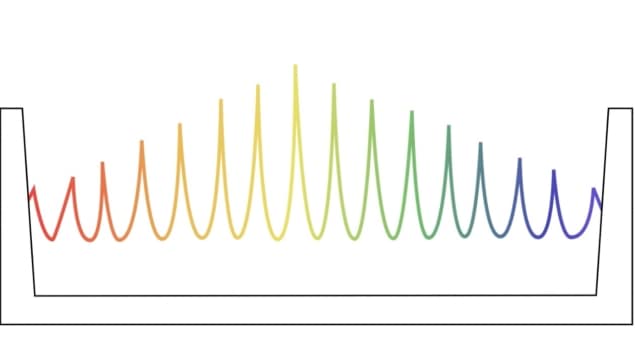
A new technique that could vastly improve the accuracy of the time and distance measurements made using dual optical frequency combs has been developed by researchers in the US and Canada. By the dynamic adjustment of one of the combs, Emily Caldwell and colleagues at the National Institute of Standards and Technology (NIST) in Boulder, Colorado and Octosig Consulting in Quebec City have made the technique much more efficient.
First demonstrated at the turn of the millennium, the optical frequency comb has boosted the accuracy of time and distance measurements. A comb can be created using a laser that emits ultra-short pulses at regular intervals. The frequency spectrum of the pulses has sharp, evenly spaced peaks – giving it the appearance of the teeth of a comb.
To measure time and distance, comb pulses are reflected off a distant object. The reflected light is then combined with a second comb, which has pulses that are slightly delayed relative to the first comb. By measuring the relative alignment of the two combs, the return time of the first comb – and therefore the distance to the reflecting object – can be determined to very high accuracy.
Little overlap
However, an important shortcoming of this technique is that the length of the pulses is much shorter than the gaps between the pulses. Therefore, it is often the case that there is little overlap between the reflected pulse and the delayed pulse. This means that measurements sometimes rely on measuring very small numbers of photons – reducing accuracy and wasting a large portion of the reflected light. This is a particularly pressing problem for sensing applications outside the lab, where the light in the first comb is already attenuated as it travels long distances to and from the target object.

Ultrasensitive frequency comb breathalyser targets real-time disease diagnosis
To overcome this problem, Caldwell’s team used a digital controller to track and control the timing of the pulse in the second comb to within an accuracy of 2 as. This allowed them to lock the second comb to the first, ensuring that the pulses arrive at the detector at the same time. As a result, all the photons in the first comb can potentially be used in a measurement.
This innovation allowed the team to take their measurements close to the quantum limit – a fundamental limit on the accuracy of the measurement that is imposed by quantum fluctuations. Another advantage of the system is that its efficient use of photons means that it can be run at much lower power – requiring only 0.02% of the photons used by previous systems for the same results.
As a result, the team’s approach could offer exciting new opportunities for sensing opportunities outside the lab. This includes measuring distances to faraway objects such as orbiting satellites to within nanometre precision.
The research is described in Nature.
- SEO Powered Content & PR Distribution. Get Amplified Today.
- Platoblockchain. Web3 Metaverse Intelligence. Knowledge Amplified. Access Here.
- Source: https://physicsworld.com/a/new-technique-boosts-the-performance-of-dual-optical-frequency-combs/



